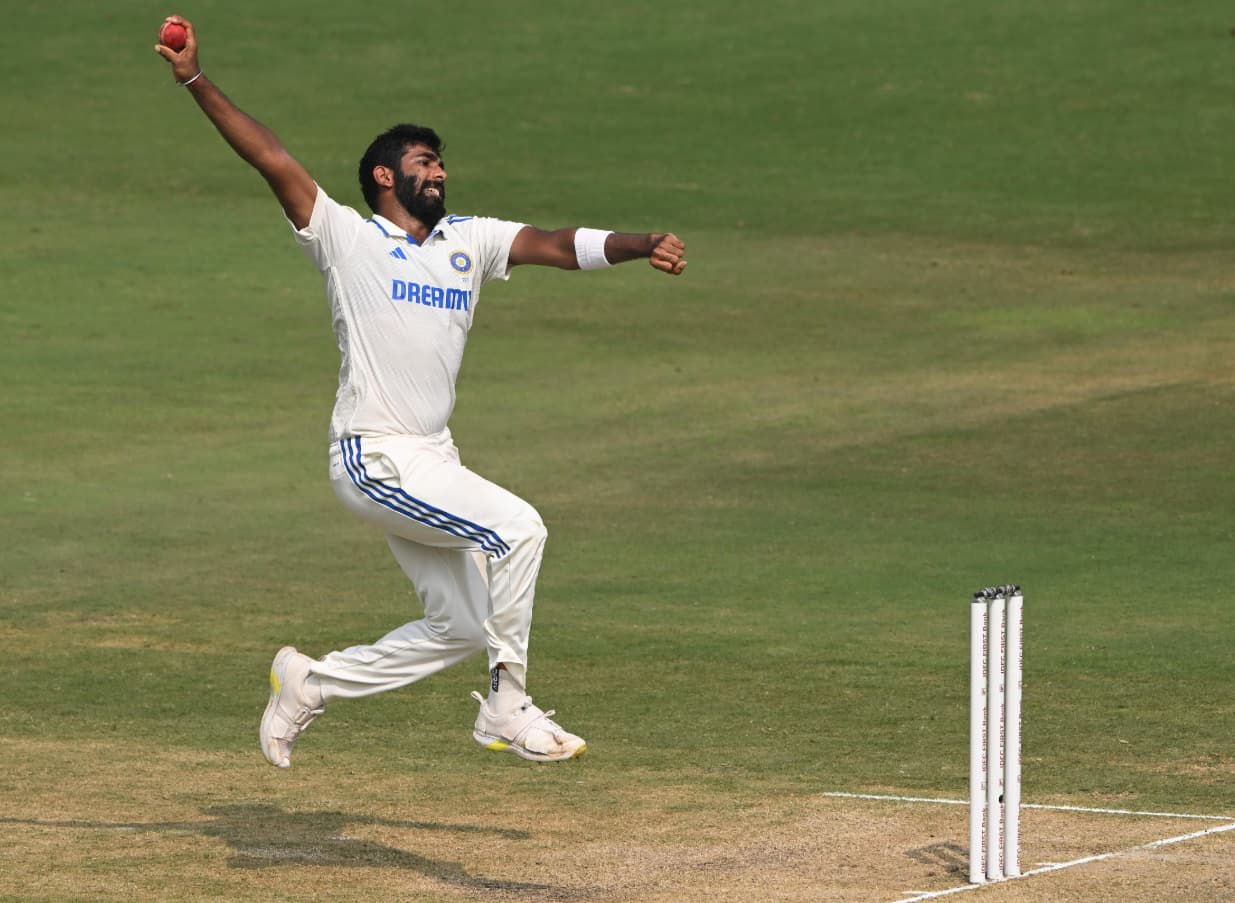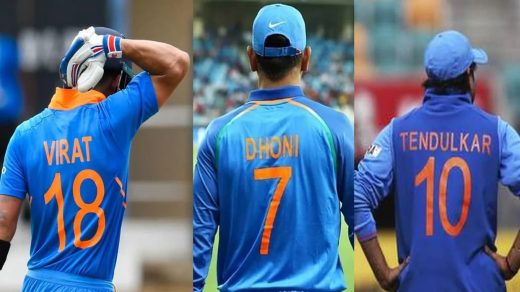It’s the final over of a World Cup match. The batting team needs 15 runs to win with three wickets in hand. All eyes are on the bowler – not the batsman.
Why? Because in cricket’s most pressure-filled moments, it’s often the bowler who decides the outcome. A perfect yorker, a deceptive slower ball, or a spinning delivery can change history in seconds.
Bowling is cricket’s heartbeat. While batsmen grab headlines with centuries and sixes, bowlers win championships through skill, strategy, and mental toughness.
From Wasim Akram’s deadly inswingers to Shane Warne’s magical leg-spin, bowling has produced cricket’s most unforgettable moments.
Understanding the types of bowling in cricket isn’t just for players – it’s for every fan who wants to appreciate why Jasprit Bumrah’s yorker is unplayable, how Muttiah Muralitharan spun balls that defied physics, or what makes reverse swing so dangerous with an old ball.
Types of Bowling in Cricket

This comprehensive guide breaks down every bowling style, from raw pace to subtle spin, explaining how each delivery works, when bowlers use them, and which legends mastered them.
Whether you’re a young cricketer choosing your bowling style or a fan wanting deeper cricket knowledge, this article covers everything you need to know about the craft that makes cricket’s greatest drama possible.
Let’s explore the fascinating world where speed meets strategy, and skill conquers strength.
The Foundation: Two Main Bowling Families
Before diving into specific deliveries, understand that cricket bowling splits into two fundamental categories: Pace Bowling and Spin Bowling. Everything else builds from these foundations.
- Pace bowling relies on speed, bounce, and movement off the seam or through the air. Pace bowlers typically bowl between 130-155 km/h (sometimes even faster), using physical strength, run-up momentum, and technique to intimidate batsmen and force mistakes.
- Spin bowling is about deception and turn. Spin bowlers sacrifice speed (usually bowling 75-95 km/h) for the ability to make the ball change direction dramatically after bouncing, confusing batsmen and creating dismissals through craft rather than force.
Neither style is “better”—both are essential. Fast bowlers dominate on bouncy, seaming pitches. Spinners thrive on dry, turning surfaces. The best teams balance both, deploying the right bowler for the right conditions.
Now let’s break down each category in detail.
Pace Bowling: Power, Precision, and Psychology
Pace bowling is cricket’s most physically demanding skill. It requires athleticism, strength, endurance, and the ability to maintain accuracy while bowling at high speeds.
Fast Bowling: The Express Lane
Fast bowlers are cricket’s ultimate intimidators. When someone like Shoaib Akhtar or Brett Lee charged in, batsmen knew pain was possible. Modern cricket’s fastest bowlers consistently hit 145+ km/h, making reaction time almost impossible.
Key Fast Bowling Weapons:
- The Yorker – Cricket’s most lethal delivery. A yorker lands right at the batsman’s feet or the base of the stumps, giving almost no time to react. When bowled perfectly, it’s virtually unplayable. Jasprit Bumrah has mastered this art, regularly destroying stumps in death overs when batsmen expect length balls. Lasith Malinga built an entire career on yorker mastery, earning the nickname “Slinga Malinga.”
- The Bouncer – A short-pitched delivery aimed at the batsman’s upper body or head. The bouncer serves multiple purposes: intimidate, force defensive shots, or induce false strokes leading to catches. Mitchell Johnson’s bouncer barrage in the 2013-14 Ashes traumatized England’s batsmen so thoroughly that some questioned whether to continue playing Test cricket.
- Outswinger – This delivery moves away from the batsman (for right-handers, it swings toward slip fielders). Outswingers are dangerous because they target the outside edge of the bat, creating catches for the wicketkeeper or slip fielders. James Anderson has taken over 700 international wickets primarily through outswing mastery, proving that you don’t need 150 km/h pace when you can swing the ball consistently.
- Inswinger – The opposite of outswing, moving into the batsman and threatening stumps or pads. Wasim Akram’s inswingers were legendary—his ability to swing the ball late and sharply made him virtually unplayable. Many batsmen got bowled through the gate (between bat and pad) by Wasim’s inswingers that started outside off-stump and curved back viciously.
- Reverse Swing – This occurs with an older ball (typically after 40+ overs) when one side is rough and the other remains shiny. The ball swings opposite to the conventional swing, completely deceiving batsmen. Pakistan’s pace duo, Wasim Akram and Waqar Younis revolutionized reverse swing in the 1990s, making it a lethal weapon. Modern bowlers like Bhuvneshwar Kumar and Mohammed Shami continue this art.
- Slower Ball – A deceptive delivery where the bowler reduces pace significantly without changing their action. In T20 cricket, slower balls are crucial in death overs when batsmen are swinging hard. Lasith Malinga, Dwayne Bravo, and Andrew Tye developed multiple slower ball variations—slower bouncers, slower yorkers, knuckle balls—making them death bowling specialists.
- Leg Cutter and Off Cutter – These deliveries use finger action to make the ball deviate off the pitch. The leg cutter moves toward the leg side; the off cutter moves toward the off side. They’re particularly effective on slow, dry pitches where the ball grips the surface. Bhuvneshwar Kumar uses cutters brilliantly, especially in Indian conditions where pitches don’t offer traditional swing.
Medium-Fast Bowling: Control Over Chaos
Medium-fast bowlers (120-135 km/h) sacrifice extreme pace for consistency and movement. They’re the workhorses who bowl long spells, maintaining pressure while faster bowlers rest.
- Swing Bowling – Making the ball move through the air is pure physics and skill. Bowlers angle the seam, maintain one side shiny and the other rough, and use atmospheric conditions (humidity helps swing) to curve the ball. Glenn McGrath wasn’t particularly fast but his ability to consistently swing the ball in the corridor of uncertainty (just outside off-stump) made him one of cricket’s greatest bowlers.
- Seam Bowling – Seam bowlers land the ball on its seam, creating unpredictable movement off the pitch. The seam hitting the pitch causes the ball to deviate slightly, enough to beat the bat. Pat Cummins and Josh Hazlewood are modern seam bowling masters, troubling batsmen even on flat pitches through consistent seam position.
Spin Bowling: Chess on Cricket Field
If pace bowling is a heavyweight boxing match, spin bowling is chess. It’s about setting traps, deceiving batsmen through flight and turn, and winning battles through intelligence rather than physical dominance.
Off-Spin: The Finger Spinner’s Art
Off-spinners use their fingers to spin the ball from off to leg (for right-handed batsmen). The ball turns into right-handers and away from left-handers.
- Doosra – Off-spin’s magic trick. The doosra looks identical to a regular off-break but spins in the opposite direction. Saqlain Mushtaq invented this delivery in the late 1990s, naming it “doosra” (meaning “the other one” in Urdu). Muttiah Muralitharan and Harbhajan Singh mastered it, creating nightmares for batsmen who couldn’t read which way the ball would spin.
- Carrom Ball – Flicked from between thumb and bent middle finger (like flicking a carrom striker), this delivery spins unpredictably. Ravichandran Ashwin popularized the carrom ball in modern cricket, using it to dismiss batsmen expecting orthodox off-spin.
- Arm Ball – Bowled with a straight seam, the arm ball doesn’t turn but slides on after pitching. It’s lethal against batsmen playing for spin—the ball goes straight, hitting stumps or trapping LBW.
Leg-Spin: Cricket’s Most Beautiful Chaos
Leg-spinners are cricket’s artists. They use wrist action to spin the ball from leg to off (for right-handers), making it spin away from the bat—the most difficult ball to play.
- Googly – The leg-spinner’s secret weapon. A googly looks like leg-spin but turns the opposite way (like an off-break). Batsmen reading leg-spin suddenly face a ball turning into them, often resulting in bowled or LBW dismissals. Shane Warne’s googly was so good that batsmen who knew it was coming still couldn’t play it.
- Top Spinner – This delivery has heavy over-spin, bouncing more than expected, and hurrying onto batsmen. It doesn’t turn much sideways but the extra bounce causes mistimed shots. Anil Kumble used top-spin brilliantly, earning the nickname “Jumbo” partly for his bounce.
- Flipper – Squeezed from the front of the hand, the flipper stays low and skids through quickly. It’s incredibly difficult to bowl consistently but devastatingly effective. Shane Warne’s flipper dismissed countless batsmen trapped LBW expecting bounce that never came.
- Slider – A faster delivery with minimal spin that skids through. It beats batsmen playing for a big turn, often hitting stumps or pads.
Left-Arm Spin: The Natural Variation
Left-arm spinners provide built-in variation simply by bowling from the other side.
- Left-Arm Orthodox – Traditional left-arm finger spin, turning from leg to off for right-handers (the mirror of off-spin). Rangana Herath took over 400 Test wickets using accurate orthodox left-arm spin, proving you don’t need massive turn if you’re consistent and smart.
- Chinaman – Left-arm wrist spin (the left-handed equivalent of leg-spin). Chinaman bowling is exceptionally rare because it’s difficult to control. Brad Hogg was one of modern cricket’s few successful chinaman bowlers, using it effectively in limited-overs cricket.
The 12 Essential Bowling Deliveries Every Fan Should Know
Understanding these 12 bowling delivery types helps you appreciate cricket’s complexity:
- Yorker – Full delivery at batsman’s feet, nearly impossible to hit
- Bouncer – Short ball rising to head height, intimidating and defensive
- Outswinger – Swings away from the batsman, targets the outside edge
- Inswinger – Swings into the batsman, threatens the stumps
- Reverse Swing – Old ball swinging opposite to the conventional direction
- Slower Ball – Reduced pace to deceive the batsman’s timing
- Doosra – Off-spin variation spinning opposite direction
- Carrom Ball – Flicked delivery with unpredictable spin
- Googly – Leg-break spinning opposite direction (into batsman)
- Flipper – Low, skidding leg-spin variation
- Top Spinner – Extra bounce from over-spin
- Arm Ball – Straight delivery without spin from a spin bowler
Mastering even a few of these makes you a dangerous bowler.
Pace vs Spin: The Eternal Debate
Here’s a quick comparison between the 2 types of bowling in cricket:
| Aspect | Pace Bowling | Spin Bowling |
|---|---|---|
| Speed | 130-155+ km/h | 75-95 km/h |
| Primary Weapon | Speed, bounce, swing | Turn, flight, variations |
| Best Conditions | Bouncy, green pitches | Dry, dusty, worn pitches |
| Physical Demand | Very high, injury-prone | Moderate, technique-focused |
| Effectiveness | New ball, early overs | Old ball, middle-late overs |
| Learning Curve | Steep but straightforward | Very steep, requires patience |
Neither is superior—both are essential. The types of bowling in cricket complement each other, creating the game’s strategic depth.
Legends and Their Signature Styles
Understanding bowling becomes easier when you watch the masters:
- Jasprit Bumrah (India) – Unique slinging action with deadly yorkers and clever slower balls. His awkward release point makes him nearly impossible to pick.
- Wasim Akram (Pakistan) – Left-arm pace genius who could swing the ball both ways, master of reverse swing and yorkers. Many consider him the greatest left-arm fast bowler ever.
- Shane Warne (Australia) – Leg-spin wizard with 708 Test wickets. His “Ball of the Century” to Mike Gatting (massive leg-break that spun miles) is cricket’s most iconic delivery.
- Muttiah Muralitharan (Sri Lanka) – 800 Test wickets (all-time record) using off-spin with a unique wrist action. His doosra was unplayable on turning pitches.
- Dale Steyn (South Africa) – Hostile fast bowler who combined speed with reverse swing. His aggressive celebration and competitive spirit made him intimidating.
- Ravichandran Ashwin (India) – Modern off-spin master with carrom ball, doosra variations, and intelligent field placements. Over 500 Test wickets and counting.
These legends prove that mastering specific bowling types can make you world-class.
Frequently Asked Questions
- Q1: How many types of bowling are there in cricket?
Cricket has two main categories—pace and spin—with over 15-20 distinct delivery types including yorkers, bouncers, googlies, doosras, and more. Each serves specific tactical purposes depending on conditions and batsmen.
- Q2: What is the difference between pace bowling and spin bowling?
Pace bowlers rely on speed (130-155 km/h), bounce, and swing/seam movement to trouble batsmen. Spin bowlers use a slower pace (75-95 km/h) but make the ball turn sharply after pitching, deceiving batsmen through flight and spin rather than speed.
- Q3: What are the main types of pace bowling in cricket?
The primary types include fast bowling (yorkers, bouncers, conventional swing), medium-fast bowling (swing and seam), and specific variations like reverse swing, slower balls, leg cutters, and off cutters.
- Q4: What bowling style does Jasprit Bumrah use?
Bumrah is a fast bowler with a unique slinging action. His signature deliveries are yorkers and slower balls, combined with excellent control and the ability to bowl consistently in death overs, making him one of modern cricket’s most effective bowlers.
- Q5: How do you bowl an outswinger?
Hold the ball with the seam angled toward slip, keep one side shiny and the other rough, and release with wrist behind the ball and seam pointing toward slip. The ball should swing away from right-handed batsmen through the air.
- Q6: What is a googly in leg-spin bowling?
A googly is a deceptive delivery from a leg-spinner that looks like normal leg-spin but turns the opposite direction (into the batsman instead of away). It’s bowled by rotating the wrist differently, making it extremely difficult for batsmen to read.
- Q7: Which bowling type is easiest for beginners?
Medium-pace seam bowling is generally easiest because it doesn’t require extreme speed or complex wrist positions. Off-spin is also accessible for beginners interested in spin bowling, as it uses natural finger action rather than complicated wrist work.
Conclusion: The Art That Defines Cricket
The types of bowling in cricket represent the game’s soul. From Bumrah’s yorkers shattering stumps to Warne’s leg-spin bamboozling legends, bowling creates cricket’s most memorable moments.
For young cricketers, choosing their bowling style is crucial. Are you athletic and aggressive? Try pace bowling.
Are you patient and strategic? Spin bowling might suit you. Whichever path you choose, remember that great bowlers combine natural talent with relentless practice and tactical intelligence.
Study the masters. Watch how Bumrah varies pace and length. Notice how Ashwin sets traps across multiple overs.
Learn from Wasim’s ability to swing the ball late. Practice religiously—bowling is 10% talent and 90% hard work.
Cricket needs great bowlers as much as great batsmen. After all, no matter how many runs you score, you can’t win without taking wickets.
That’s the bowler’s power—the ability to change matches, win championships, and create moments that last forever.
So pick up that ball, find your style, and remember: every legendary bowler started exactly where you are now—with passion, determination, and a dream to master the craft that wins matches.
Also Check:


